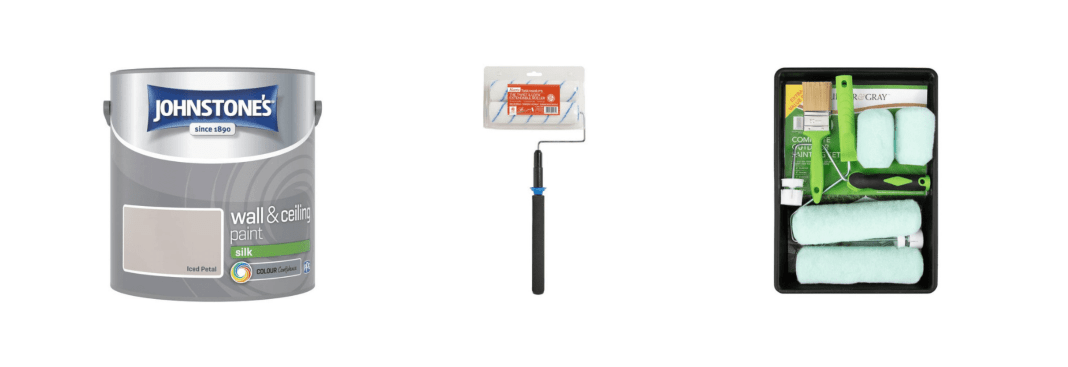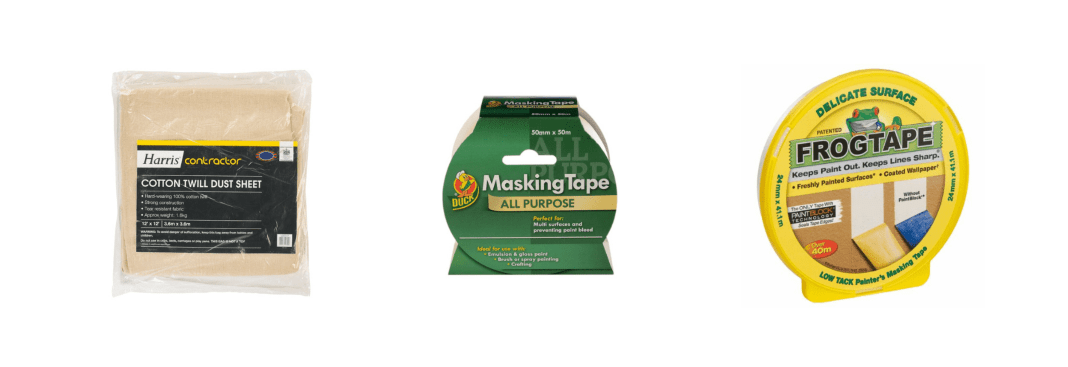DIY Tips: An Interior Painting Checklist
08 June 2021
This interior painting checklist from B&M will help you to successfully apply a fresh coat of paint in any space. Follow these steps to ensure that your painting project goes perfectly. Read on to learn how to:
- Compare Interior Paint Samples
- Choose the Right Painting Supplies
- Protect Floors and Furnishings
- Prepare Surfaces
- Start Painting
Applying a fresh coat of paint to a room can be nerve-wracking! After all, you’re making a big change - and things can start to go wrong if you don’t prepare properly.
That’s why the B&M team has created this handy interior painting checklist to help you get organised and ensure your painting project goes exactly how you want it to!
Compare Interior Paint Samples
You need to be happy with your chosen colours and finishes of paint before you get started! Get hold of a range of samples that you like and test them out on your walls to decide which is best.
B&M Top Tip: Emulsion is the most commonly used interior paint for walls and ceilings. You can select from a range of finishes - including matte, eggshell, satin and silk, depending on your tastes. Wooden features will usually need a specialist gloss wood paint.

Choose the Right Painting Supplies
Rollers are often the best tools to help you get a smooth and even finish. B&M offers options with extendable poles for easy access to ceilings and the tops of walls - and you can also pick up specialist sets including paint brushes, rollers and sleeves.
B&M Top Tip: Corners can be tricky; smaller paintbrushes are better for the task of “cutting in” in these spots.
Protect Floors and Furnishings
If you’ve already got your chosen carpet or flooring in place, you certainly don’t want to be dripping paint on it!
Cover any surfaces you wish to protect with drop cloths or dust sheets. Don’t forget to shield your switch covers and window frames too! We recommend specialist masking tape for these purposes.
You can also use low-tack painter’s tape on dry, freshly painted surfaces to create sharp, clean lines where one colour meets another.
B&M Top Tip: Move furnishings to the middle of the room to protect them from stray paint drops - and remember to protect your own clothing too!

Prepare Surfaces
If you’re removing wallpaper before painting, you may uncover some minor flaws that can easily be smoothed over using filler.
Give walls a gentle rub with sandpaper and vacuum them using a brush attachment to make them sleek.
If you’re painting new plaster, you’re likely to need to apply an initial “mist coat” - that’s emulsion diluted with water - to prevent cracking and peeling.
B&M Top Tip: When painting your skirting boards, door frames or any other wooden feature, you should apply a primer and undercoat for best effects.

Start Painting
Now it’s time to get started!
You’ll usually need at least two coats of paint on each surface - sometimes more - to get the full effect. It’s best to wait six to eight hours between coats so that the paint has dried properly before you apply more.
B&M Top Tip: Stock up on wipes and cloths to quickly remove any accidental drips or runs.
So, your interior painting checklist should include choosing your paint, getting hold of equipment, protecting floors and furniture and priming your surfaces before making a start!
Have you transformed your home with paint? Share the results with the B&M Community via Twitter, Facebook or Instagram.



